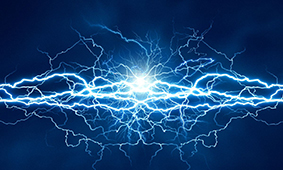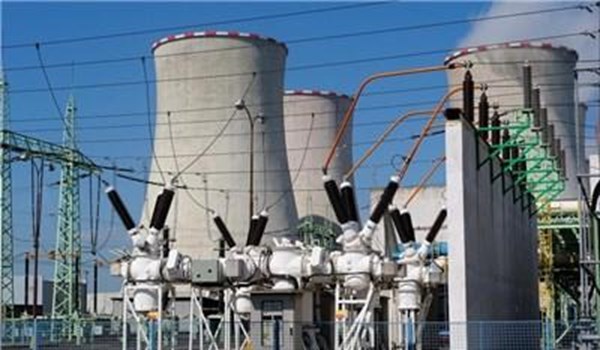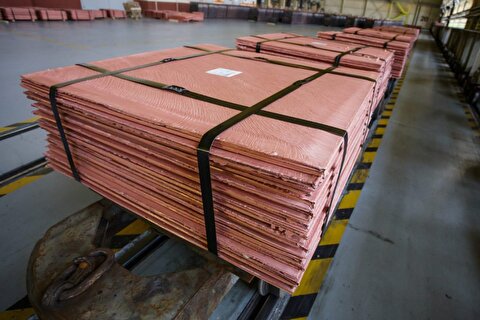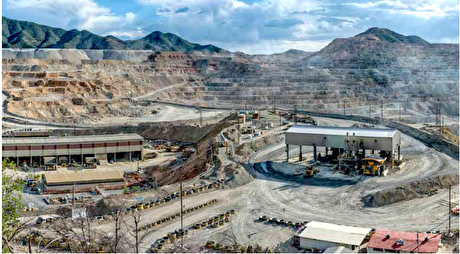
Iran Further Increasing Power Capacity


Steam unit of Kashan Combined Cycle Power Plant became operational on Sunday in the presence of First Vice-President Eshaq Jahangiri.
In his visit to Kashan Combined Cycle Power Plant, Jahangiri visited various units of this giant project and was briefed on the construction operation trend and specifications of this project.
Construction operation of steam unit of the Kashan Combined Cycle Power Plant started in 2015, costing over 16,500 billion rials.
Kashan Combined Cycle Power Plant was equipped with two gas units with the total capacity of 324 megawatts. By commissioning steam unit of the power plant, its production capacity will hit 484 megawatts, showing a considerable growth.
With launching steam unit of the power plant, moreover increasing nominal production capacity of electricity, it will boost performance of electricity grid in the region and also increase power generation in the network significantly.
Considering the high capacities available in the city, it is expected that launch of this unit will generate more employment opportunities in the region.
Generally speaking, launch of steam unit to the power generation network will help reduce environmental pollution and also increase output and efficiency of the power plant.
Iran is currently supplying Iraq, Afghanistan and Pakistan with electricity, CEO of Tavanir Company Mohammad Hassan Motavallizadeh said on January 04, adding that the country is poised to double the volume of its power export to neighboring countries.
CEO of Tavanir Co., in charge of development of electric power generation, said that the bulk of electricity that Iran is currently exporting to other countries is too little compared to the generated volume, adding that the country presently has the potential to double the bulk of its exports.
Motavallizadeh said that Iran is currently exporting over 1,000MW electricity to neighboring countries, noting that the major importer of Iran’s electricity is Iraq, followed by Afghanistan and Pakistan.
He maintained that only a very small amount of generated electricity is being exported, adding that Iran can increase the bulk of its electricity exports if neighboring countries would like to place an order for more imports.
According to reports, it is predicted that Iran’s export of electricity would hit $33 billion by the Iranian calendar year of 1404 (March 21, 2025- March 20, 2026).
On December 31, Pakistan’s Minister for Power Omar Ayub Khan, in a meeting with Tehran’s Ambassador to Islamabad Mehdi Honardoost, underlined his country's willingness to import more electricity from Iran.
Ayub Khan said that Pakistan is ready to hold negotiations on the renewal of the agreement on 100MW electricity import to its border province of Baluchistan.
The two sides stressed the need to continue joint efforts in the power sector on both power generation and transmission.
Honardoost, for his part, noted that Iranian companies and contractors are ready to take part in the neighboring country’s power sector.
Last year, Iran expressed readiness to provide up to 3,000 MW electricity to Pakistan.
However, according to Ayub Khan, there is a problem on Pakistan side because importing such quantity of electricity requires a robust transmission system, which requires a lot of investment.


Gold price eases after Trump downplays clash with Fed chair Powell

Copper price hits new record as tariff deadline looms

Brazil producers look to halt pig iron output as US tariff threat crimps demand

Three workers rescued after 60 hours trapped in Canada mine

Gold price could hit $4,000 by year-end, says Fidelity

Chile’s 2025 vote puts mining sector’s future on the line

US targets mine waste to boost local critical minerals supply

Energy Fuels surges to 3-year high as it begins heavy rare earth production

Glencore workers brace for layoffs on looming Mount Isa shutdown

Trump tariff surprise triggers implosion of massive copper trade

Maxus expands land holdings at Quarry antimony project in British Columbia

BHP, Vale accused of ‘cheating’ UK law firm out of $1.7 billion in fees

Southern Copper eyes $10.2B Mexico investment pending talks

American Tungsten gets site remediation plan approved for Ima mine in Idaho

Kinross divests entire 12% stake in Yukon-focused White Gold

Gold price could hit $4,000 by year-end, says Fidelity

Southern Copper expects turmoil from US-China trade war to hit copper

Ramaco Resources secures five year permit for Brook rare earth mine in Wyoming

Column: EU’s pledge for $250 billion of US energy imports is delusional

Trump tariff surprise triggers implosion of massive copper trade

Maxus expands land holdings at Quarry antimony project in British Columbia

BHP, Vale accused of ‘cheating’ UK law firm out of $1.7 billion in fees

Southern Copper eyes $10.2B Mexico investment pending talks

American Tungsten gets site remediation plan approved for Ima mine in Idaho

Kinross divests entire 12% stake in Yukon-focused White Gold

Gold price could hit $4,000 by year-end, says Fidelity

Southern Copper expects turmoil from US-China trade war to hit copper

Ramaco Resources secures five year permit for Brook rare earth mine in Wyoming














